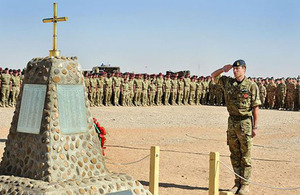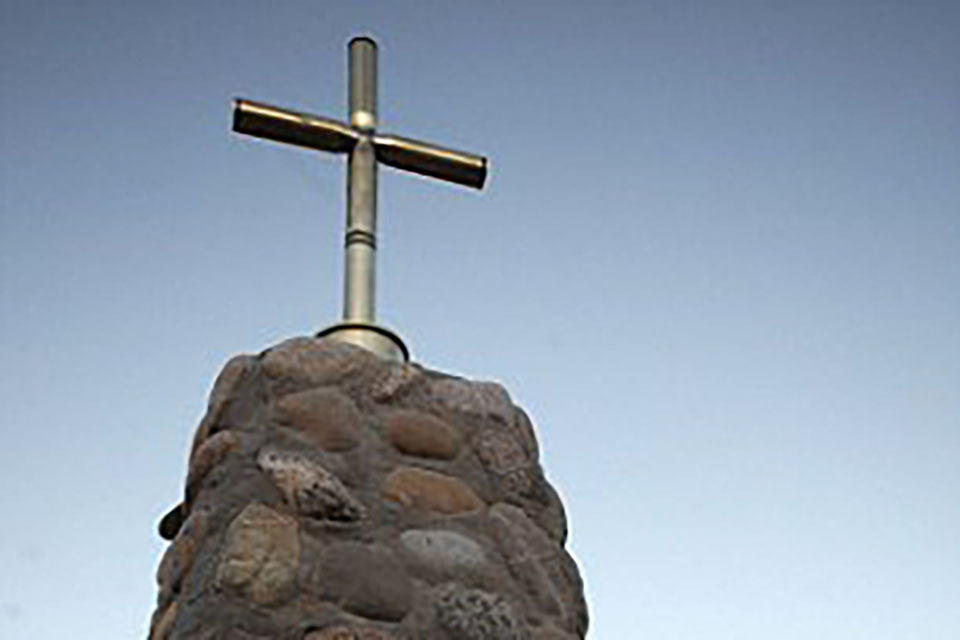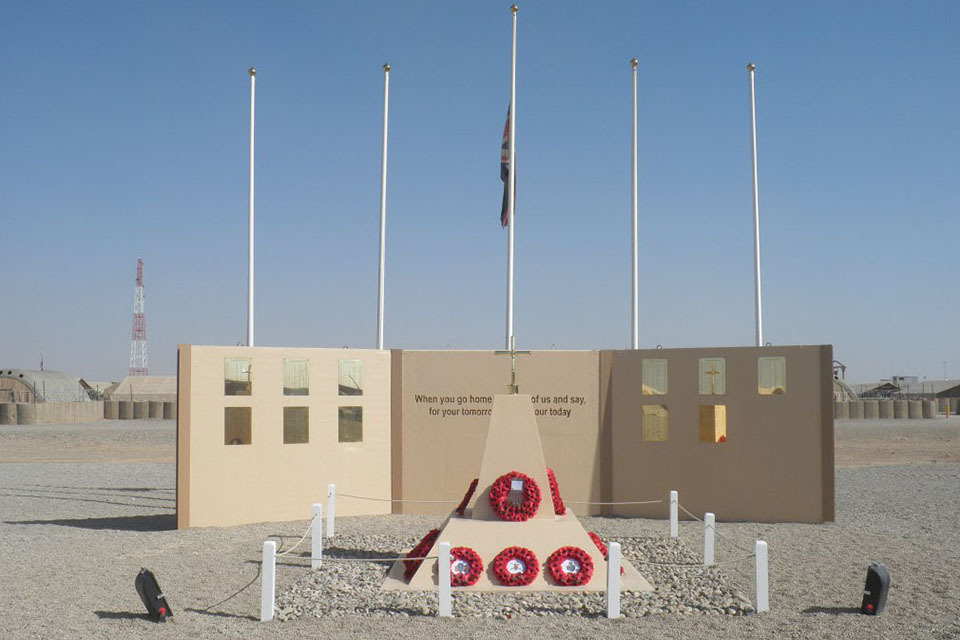The History of the Bastion Memorial
A service to rededicate the Bastion Memorial will take place on Thursday 11 June at the National Memorial Arboretum in Staffordshire.

The Duke of Cambridge salutes the memorial.
As part of a special series of blogs on the service, we are looking back at the history behind the development of the memorial, which became a central part of life at Camp Bastion until 2014 when British combat operations in Afghanistan ended and the Camp was closed.
Initial Cairn
There were in fact three different memorials in Camp Bastion built to remember Armed Forces personnel who lost their lives in Afghanistan during the campaign.
16 Air Assault Brigade established the first memorial shortly after British troops started operating in Helmand Province in 2006. It was a simple cast concrete cairn (a man-made pile of locally sourced stones – see below) topped by a brass cross, made from empty 50mm shell cases.
As casualties sadly increased and the need for a larger memorial became more apparent, in 2007 the original cairn was moved and a new memorial was built. The original brass cross was saved and became part of a Garden of Remembrance set up by 16 Air Assault Brigade in their home town of Colchester.

Initial Cairn built in 2006.
Second Cairn
This Second Cairn, again built of cast concrete inset with local stones was topped with a larger cross, made of empty 105mm shell cases.

The Second Cairn Cross built in 2007/8.
Memorial Wall
In April 2011 plans were drawn up to create a larger more permanent memorial, the design of which would incorporate three blast walls which had been used to protect the Camp.

The memorial wall was built by the UK Works Group Royal Engineers.
As UK combat operations came to an end and Camp Bastion was closed, British sailors, soldiers and airmen and women conducted a vigil to mark the departure of the memorial wall from the Camp and its transportation to the UK.
In a speech at the ceremony Brigadier Rob Thomson, who was the most senior UK military officer in Helmand at the time, reflected on the sacrifice of British troops and those of other nations. He said:
We all have very particular, personal and often painful memories of the loss that has been felt across all three of our Services. The memorial wall has become a bastion of our collective memory of those who we have lost during this campaign. Its rightful and timely transfer from this land to ours will ensure that the memories of a foreign field are brought home in the right way and will endure for future generations.
The memorial has now been recreated at the National Memorial Arboretum in Staffordshire. It has been made to the same design but from sand coloured granite with the names of the Fallen engraved on black granite plaques, picked out in gold. A map of Afghanistan has been mounted on the rear of the new memorial made of raised granite incorporating stone fragments from Afghanistan, outlining key British military locations in the country, which visitors will be able to touch. The original brass plaques and fragments of the former wall have been built into the new memorial’s internal core.
The cross, that was re-dedicated during the Service of Commemoration, held at Saint Paul’s Cathedral on 13 March 2015, will be mounted on the central plinth of the new memorial during the Bastion Memorial Service, completing the build.
Over the next week we invite you to remember and join in the conversation by using #BastionMemorial on Twitter. For more information on how to attend the service if you are a family member or how you can visit the memorial, please visit our website.